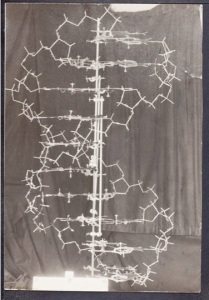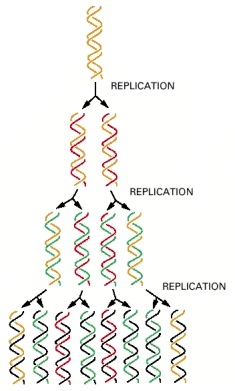One of the things that is difficult to decide when communicating science is how much detail to give. The same goes for making images.
If you look for images of “DNA” in a search engine you get many different images. And you can imagine looking for different images depending if you wanted to see DNA’s structure, replication, methylation, etc.
The first published figure of DNA from Watson and Crick’s paper is quite simple (Figure 1). The small legend underneath lets you know there is a more complex structure involving phosphate, sugar, and bases but the basic double helix structure is what is most important.
On the other end of the spectrum is something like their original model where they have shown the chemical structures for both the sugar-phosphate backbone and the nucleic acid base pairs (Figure 2).
So the question was and remains – what details are most important to show? The answer, of course, depends on a number of things including your audience and your goal(s).
For example, if I wanted to illustrate how DNA replication works, there is no need to add all of the underlying chemical structure. Perhaps like Figure 3 all I need is the backbone itself. Or I could zoom in a bit and add a little more detail. Check out the chapter from Molecular Biology of the Cell on Pubmed here for many different ways of illustrating DNA.
It makes a lot of sense to give only necessary information helping people concentrate on the point you want to make and preventing distraction. But in reality it’s difficult for many scientists to decide what is actually not important. I struggle to focus on what is the minimum accurate figure I can make and what is extra material that may confuse or distract from my main point.
Sources:


